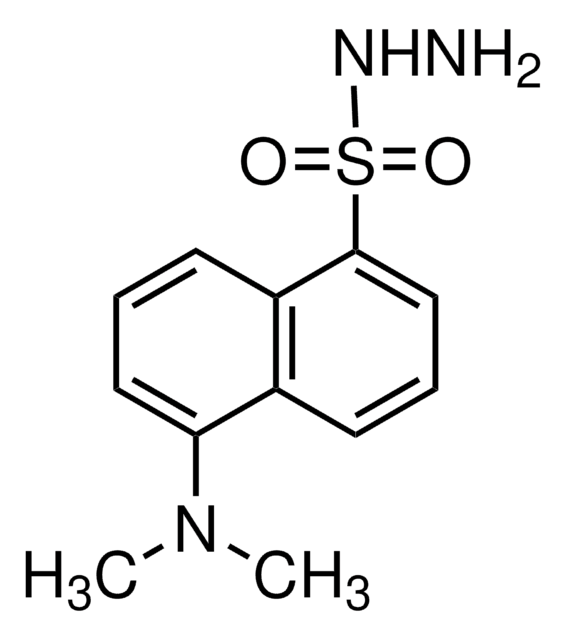40718
Diethyl pyrocarbonate
96% (NT)
Synonym(s):
DEP, DEPC, Diethyl dicarbonate, Diethyl oxydiformate, Ethoxyformic acid anhydride
About This Item
Recommended Products
Assay
96% (NT)
form
liquid
color
APHA: ≤20
refractive index
n20/D 1.398 (lit.)
n20/D 1.398
bp
93-94 °C/18 mmHg (lit.)
solubility
95% ethanol: 4.5 g/10 mL, clear, colorless
density
1.121 g/mL at 20 °C
1.101 g/mL at 25 °C (lit.)
shipped in
wet ice
storage temp.
2-8°C
SMILES string
CCOC(=O)OC(=O)OCC
InChI
1S/C6H10O5/c1-3-9-5(7)11-6(8)10-4-2/h3-4H2,1-2H3
InChI key
FFYPMLJYZAEMQB-UHFFFAOYSA-N
Looking for similar products? Visit Product Comparison Guide
Related Categories
General description
Application
- For the modification of histidyl residues in proteins.
- As a nuclease inhibitor, for the extraction of undegraded nucleic acids from etiolated and green plant tissues.
- For the modification of linear and supercoiled plasmid DNAs.
- As a chemical probe to investigate the secondary structure in negatively supercoiled DNA.
- For cabethoxylation of histidine residues of actin.
Biochem/physiol Actions
Signal Word
Warning
Hazard Statements
Precautionary Statements
Hazard Classifications
Acute Tox. 4 Oral
Storage Class Code
10 - Combustible liquids
WGK
WGK 3
Flash Point(F)
156.2 °F - closed cup
Flash Point(C)
69 °C - closed cup
Personal Protective Equipment
Certificates of Analysis (COA)
Search for Certificates of Analysis (COA) by entering the products Lot/Batch Number. Lot and Batch Numbers can be found on a product’s label following the words ‘Lot’ or ‘Batch’.
Already Own This Product?
Find documentation for the products that you have recently purchased in the Document Library.
Customers Also Viewed
Our team of scientists has experience in all areas of research including Life Science, Material Science, Chemical Synthesis, Chromatography, Analytical and many others.
Contact Technical Service







